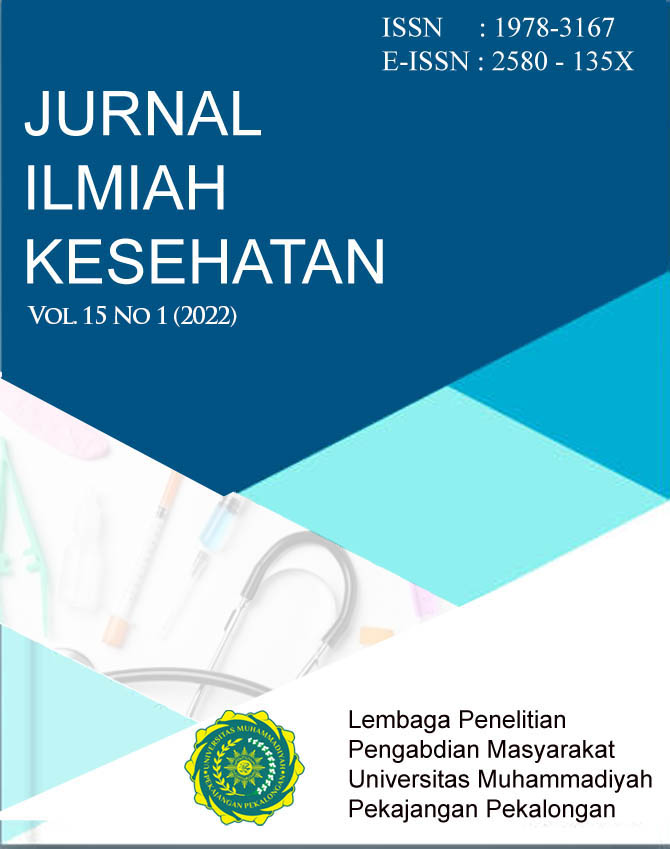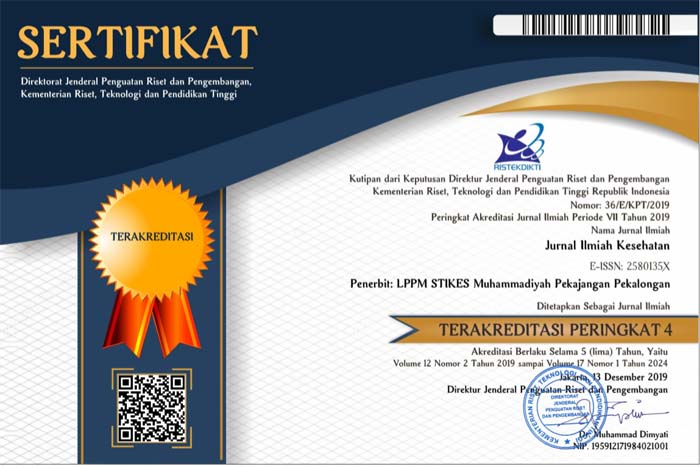Optimization Of Formula SNEDDS Mahogany Seed Oil (Swietenia mahagoni (Linn.)) with Simplex Lattice Design Method
DOI:
https://doi.org/10.48144/jiks.v15i1.626Keywords:
SNEDDS Mahogany Seed Oil OptimizationAbstract
Mahogany seed oil has antimicrobial, antihypertensive, antidiabetic and anti-inflammatory activities. This activity can be developed in SNEDDS dosage form. SNEDDS can deliver lipophilic drugs to the target side of the drug. SNEDDS has oil components, surfactants, and co-surfactants. In this study, optimization of the SNEDDS formula with the SLD method will be carried out. The oil components tested were oleic acid, VCO and HDI; surfactants namely Cremophor RH40 and Tween 80; and co-surfactant components, namely PEG 400 and propylene glycol. The tests for SNEDDS were transmittance, pH, and emulsification time. The results of the evaluation were analyzed to obtain the optimal formula and determined the loading dose. The next test was to determine the particle size and zeta potential to see the stability of SNEDDS mahogany seed oil. Result : Optimal formula composition obtained oleic acid 1,00 Cremophor RH 40 7,89 and PEG 400 1,11 with desirability value 0,988. Loading dose of mahogany seed oil obtained 800 l with a transmittance value of 99,3 % + 0,44 ; pH 5,06 + 0.63 , and emulsification time 74,04 + 6,05 seconds. SNEDDS mahogany seed oil measuring 17,7 nm + 0,3 with a potential zeta value of -22,67 mV + 0,47. SNEDDS mahogany seed oil obtained belongs to Grade A where SNEDDS quickly forms nanoemulsions in 1 minute, has a clear appearance.
References
P. Yasotha, K. Sangeetha, and R. Rajendran, “Phytochemical and Antimicrobial Potential of Seed and Bark Extracts of Swietenia Mahagoni (L.) Jacq.,” Int. J. Pharm. Sci. Res., vol. 10, no. 2, pp. 712–720, 2019.
N. F. A. Bakar, N. A. Bakeri, L. M. Salleh, H. A. Perseni, M. L. Hilmi, and D. N. A. Zaidel, “Extraction of swietenia macrophylla seed oil using supercritical carbon dioxide technique and its antioxidant, antidiabetic and toxicity properties,” Chem. Eng. Trans., vol. 78, pp. 523–528, 2020.
S. Indratmoko, S. D. Cahyani, and A. Tenri, “Optimasi Formula SNEDDS Ekstrak Etanol Daun Sirsak (Annona muricata) sebagai Antibakteri (Stapylococcus aureus) Dengan Metode Simplex Lattice Design,” J. Ilm. Kefarmasian, pp. 65–70, 2020.
Z. Hajli, “Isolasi Senyawa Golongan Flavonoid Biji Mahoni (Swietenia mahagoni Jacq) yang Berpotensi Sebagai Antioksidan,” Dep. Kim. Fak. MIPA Inst. Pertan. Bogor, 2011.
W. Wulandari, D. E. Ermawati, and A. Yugatama, “Optimization SNEDDS (Self-Nano Emulsifying Drug Delivery System) of ZnO that dispersed into Hydrogel Matrix as UV-Protective,” IOP Conf. Ser. Mater. Sci. Eng., vol. 578, no. 1, 2019.
S. E. Priani, S. Y. Somantri, and R. Aryani, “Formulasi dan Karakterisasi SNEDDS (Self Nanoemulsifying Drug Delivery System) Mengandung Minyak Jintan Hitam dan Minyak Zaitun,” J. Sains Farm. Klin., vol. 7, no. 1, p. 31, 2020.
L. Pratiwi, A. Fudholi, R. Martien, and S. Pramono, “Self-nanoemulsifying drug delivery system (Snedds) for topical delivery of mangosteen peels (Garcinia Mangostana l.,): Formulation design and in vitro studies,” J. Young Pharm., vol. 9, no. 3, pp. 341–346, 2017.
A. N. Artanti, F. Prihapsara, D. E. Ermawati, and A. S. Shofa, “Optimization of Self-Micro Emulsifying Drug Delivery System) for Soursop Leaf (Annona muricata Linn.) Chloroform Extract,” Maj. Obat Tradis., vol. 25, no. 2, p. 81, 2020.
M. Daniel, “Magnoliophyta (Flowering plants): A logical and phylogenetic classification,” Int. J. Pharma Bio Sci., vol. 2, no. 1, pp. 465–484, 2011.
R. Marjoni, Dasar-Dasar Fitokimia. Jakarta Timur: CV. Trans Info Media., 2016.
A. A. G. N. A. J. Nyoman Citra Suryani, Dewa Gede Mayun Permana, “PENGARUH JENIS PELARUT TERHADAP KANDUNGAN TOTAL FLAVONOID DAN AKTIVITAS ANTIOKSIDAN EKSTRAK DAUN MATOA (Pometia pinnata,” J. Ilmu dan Teknol. Pangan, vol. 5, no. 1, pp. 1–10, 2016.
P. Usu, L. Aziz, M. Siregar, C. L. Keng, and P. Lim, “Pertumbuhan dan Akumulasi Alkaloid dalam Kalus dan Suspensi Sel Eurycoma longifolia Jack of Eurycoma longifolia Jack Pendahuluan Bahan dan Metoda,” J. Ilm. Pertan., vol. 41, no. 1, pp. 19–27, 2006.
L. K. D. Ahmad Dwi Setyawan, “REVIEW : Senyawa Biflavonid pada Selaginella Pal. Beauv. dan Pemanfaatannya,” Biodiversitas, vol. 9, no. 1, pp. 64–81, 2008.
R. Yulia, “Kandungan tanin dan potensi anti,” Inst. Pertan. Bogor, p. 1, 2006.
B. Suliman, “Fatty acid composition and antibacterial activity of Swietenia Macrophylla king seed oil,” African J. Plant Sci., vol. 7, no. 7, pp. 300–303, 2013.
S. P. Nandita, I. Kuncahyo, and R. Harjanti, “Formulation and Optimization of Furosemide Snedds With Variation Concentration of Tween 80 and PEG 400,” J. Fundam. Appl. Pharm. Sci., vol. 2, no. 1, pp. 34–42, 2021.
A. K. Singh, Nanoparticle Pharmacokinetics and Toxicokinetics. 2016.
Y. R. Nuari, I. Wahyuningsih, and S. Prabawati, “Self-Nanoemulsifying Drug Delivery System (SNEDDS) of piroxicam,” Pharmaciana, vol. 11, no. 2, p. 185, 2021.
D. E. Ermawati, A. Yugatama, and W. Wulandari, “Optimization of Olive Oil, Tween 80, and Propylene Glycol of Selfnanoemulsifying Drug Delivery System of Zinc Oxide By D-Optimal Method,” J. Pharm. Sci. Community, vol. 17, no. 2, pp. 92–101, 2020.
S. Samimi, N. Maghsoudnia, R. B. Eftekhari, and F. Dorkoosh, Lipid-Based Nanoparticles for Drug Delivery Systems. Elsevier Inc., 2018.












